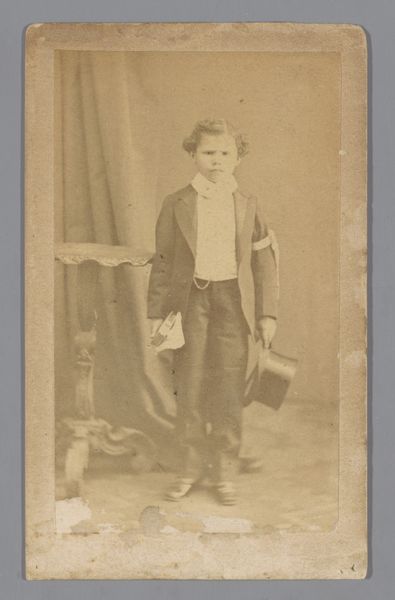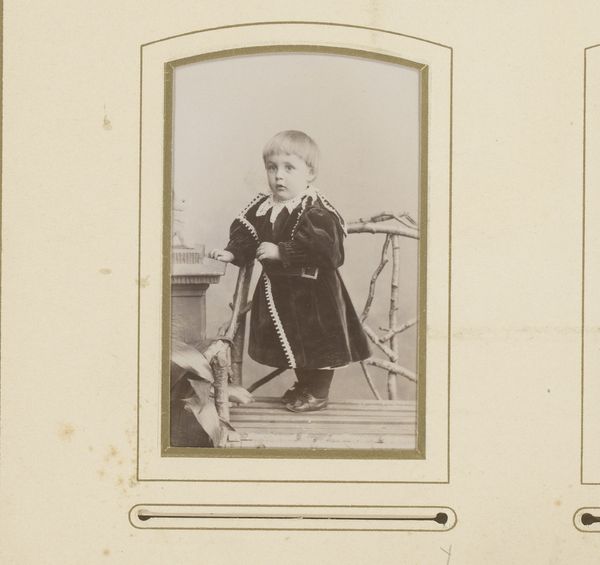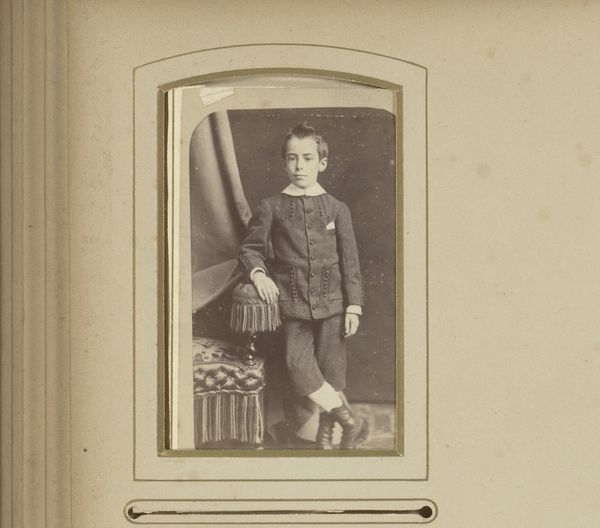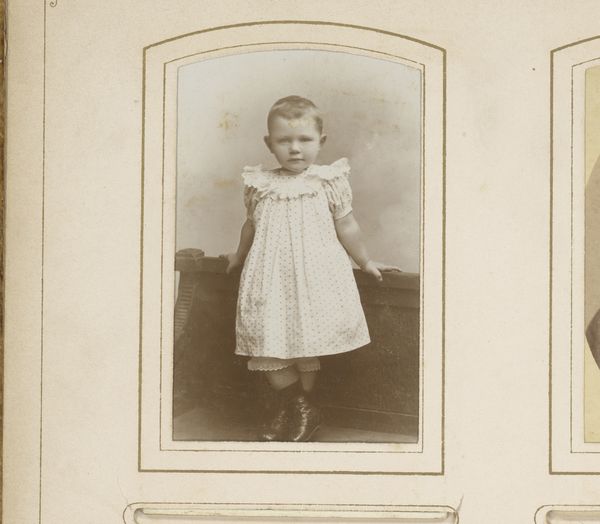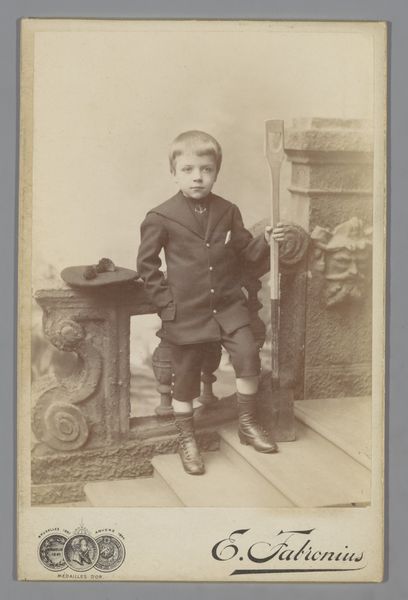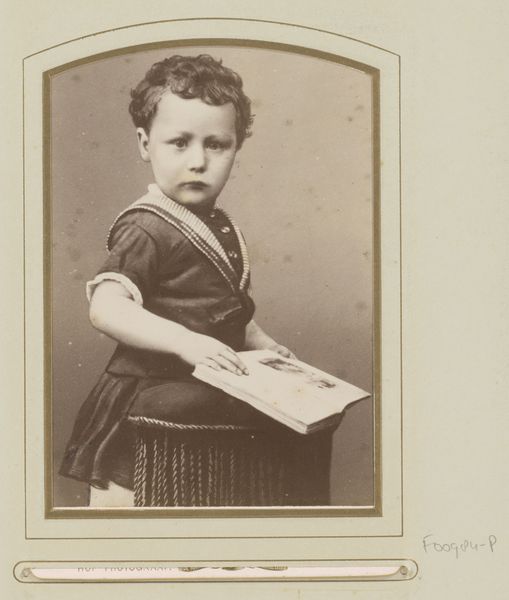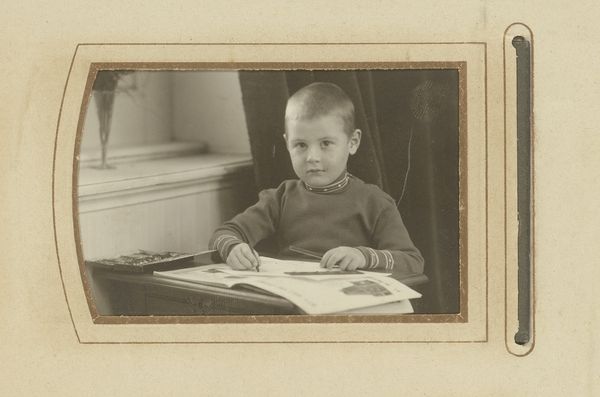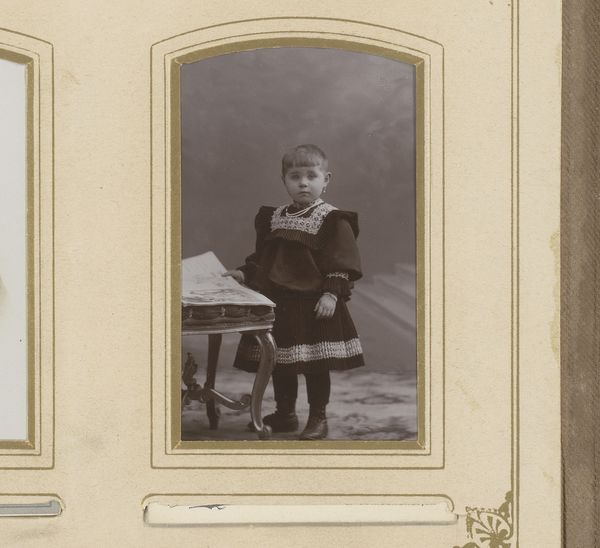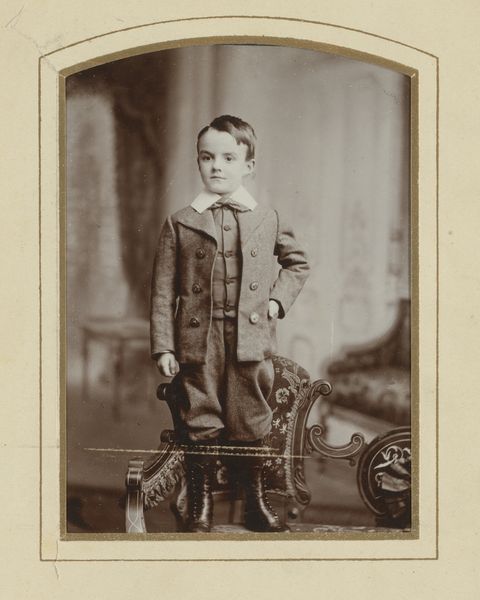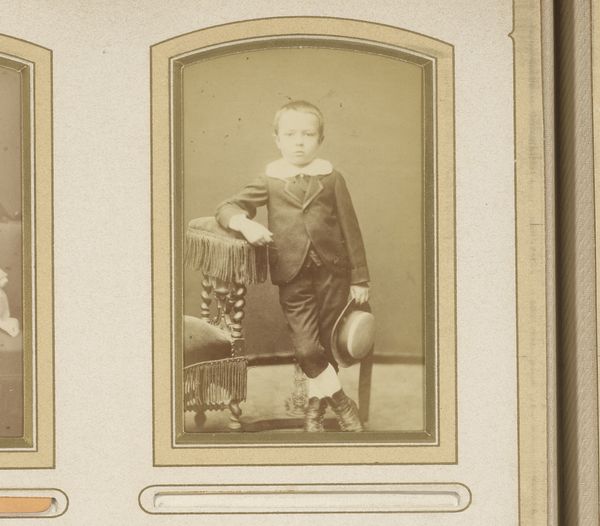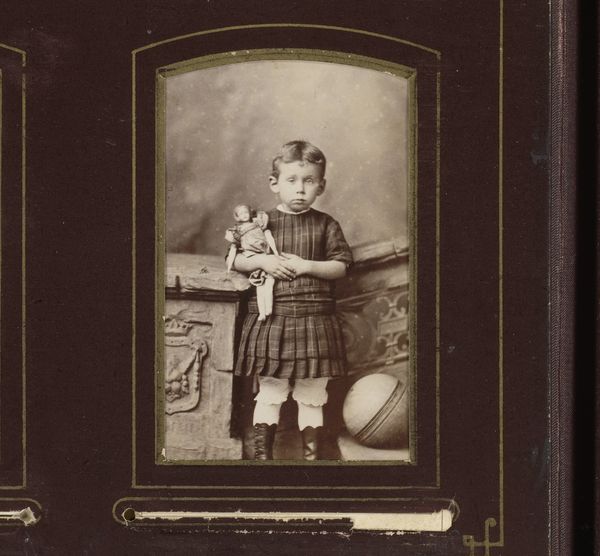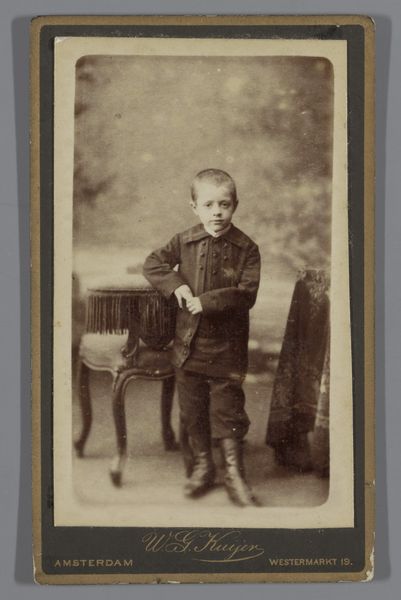
Robert Paul, 216 Johnson Street, 10 year old newsy. Found at 11 P. N. with 12 papers near ? Hotel. Been at it 4 years. Often sells until midnight. He and brother make about $1.50 a day. Goes to school little. Sells around the college inn
0:00
0:00
Dimensions: image: 114 x 92 mm
Copyright: CC-BY-NC-ND 4.0 DEED, Photo: Tate
Editor: This photograph, "Robert Paul, 216 Johnson Street..." by Lewis Hine, is incredibly moving. The boy's gaze is so direct. What kind of social commentary was Hine trying to capture here? Curator: Hine strategically used photography to expose social issues like child labor. The detailed captioning accompanying the image provides context, highlighting the boy's harsh reality. Consider how institutions, like the National Child Labor Committee, used these images to advocate for reform. Editor: So, the image becomes a tool for political change? Curator: Exactly. Hine's work reveals how photography can be used to shape public opinion and influence social policy. It forces us to confront uncomfortable truths about the power structures within society. Editor: I see it now, the image's power lies in its historical impact. Curator: Indeed. It’s a testament to the artist's ability to foster dialogue on these critical issues.
Comments
tate 8 months ago
⋮
http://www.tate.org.uk/art/artworks/hine-robert-paul-216-johnson-street-10-year-old-newsy-found-at-11-p-n-with-12-papers-near-p79937
Join the conversation
Join millions of artists and users on Artera today and experience the ultimate creative platform.
tate 8 months ago
⋮
This object is one of a group of twenty-two black and white photographs in Tate’s collection (Tate P79917–P79938), which all relate to American photographer Lewis Hine’s work for the National Child Labor Committee (NCLC) in the US during the 1910s. Eleven of the photographs are Hine’s own documents of various panels that he made for exhibitions of his work. These combine text, photographs and drawn or painted pictures that provide information about children’s working conditions and use various arguments to suggest that child labour should be reformed or banned. While most primarily focus on the ills of child labour (‘Industry saves at society’s expense’), some highlight instances of recent reforms, extolling their benefits (‘New Orleans conditions: these high standards pay’). The accompanying images on these panels generally include photographs and illustrations of child labourers, as well as maps of America and representations of homes and workplaces. The other ten photographs are prints of pictures that Hine took of working children, some of which are also used in the exhibition panels. Most of these show children within or outside of their workplaces, although some depict related scenes, including one in which a boy attends juvenile court ‘charged with stealing a bicycle’. The photographs vary in size and most incorporate a photocopy of a caption. The captions relating to the photographic images (as opposed to the exhibition panels) often specify a number, such as ‘Neg. #3785’, and state the location in which the picture was taken, the date, and information about the subjects such as their age and profession.
